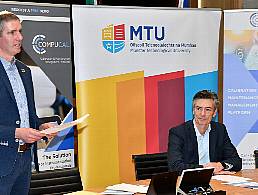The Minister for Education and Skills Ruairi Quinn, TD, today announced his department’s plans to reconfigure the higher education system in Ireland, which will include the establishment of four regional clusters of universities and institutes of technology.
A major programme for structural reform has been laid out, which is meant to allow for greater levels of institutional collaboration.
All seven universities and 14 institutes of technology will form regional clusters as follows:
- South/South-east: University College Cork, Cork IT, IT Tralee, Waterford IT and IT Carlow
- West/Midwest: University of Limerick, Limerick IT, Mary Immaculate College, Galway-Mayo IT, IT Sligo, Letterkenny IT and NUI Galway (St Angela’s College of Education will be incorporated into NUI Galway)
- Dublin/Leinster (Pillar I): University College Dublin, Trinity College Dublin, National College of Art and Design, Marino Institute of Education and Dún Laoghaire Institute of Art, Design and Technology
- Dublin/Leinster (Pillar II): Dublin Institute of Technology, IT Tallaght, IT Blanchardstown, Dublin City University (incorporating linked colleges), National College of Ireland, Dundalk IT, NUI Maynooth, Athlone IT and Royal College of Surgeons in Ireland
As well as greater collaboration and co-ordinated academic planning to reduce duplication, these regional clusters should also provide easier student pathways from one institution to another.
The idea is that this restructuring will better address the demand for higher education forecast for the next 20 years. A recently published report from ESRI, commissioned by the Higher Education Authority (HEA), claimed the higher education system needed to grow by at least 25pc to keep up with Ireland’s economic growth and technological change.
A first step for greater reform
The HEA, which will undertake the underlying process of reconfiguration, has welcomed today’s announcement.
“This restructuring of the system is not an end in itself but is a key enabler of the wider national strategy for higher education,” said HEA chair John Hennessy. “The challenge now for the HEA, the higher education institutions and all stakeholders is to build on this position to continue to drive the performance of both individual institutions and the system as a whole, to ensure the best quality outcomes for students, the economy and society.”
Quinn has also approved the formal application of three groups of institutes of technology to be designated as technical universities. The first group involves Dublin Institute of Technology, IT Tallaght and IT Blanchardstown, the second includes Cork IT and IT Tralee and the third group consists of Waterford IT and IT Carlow.
Speaking today, Denis Cummins, chair of Institutes of Technology Ireland and president of Dundalk IT, said, “The institutes of technology warmly welcome publication of this document which marks another milestone in the move to transform our higher education system. We strongly support the views expressed by the HEA chairman that other elements of reform also need to be progressed and that comprehensive wide-ranging legislative change is needed urgently to give effect to these proposals. Our institutes of technology have engaged constructively in this process since its commencement four years ago and we will continue to play our part to deliver the best higher education system we can for our students, society and the economy.”
Higher education image via hxdbzxy/Shutterstock




